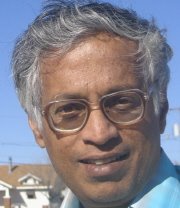Selective memory
[Times of India, Chembur-Ghatkopar Plus, SATURDAY, MARCH 22, 2003 02:17:14 AM]Some of the important functions of the brain are related to memory. We learn things all the time, storing information and recalling it whenever required. While a great volume of information is received continuously, only some of it is selected and stored, to make it available later when required. Selection seems to be necessary as otherwise it may take far too long to recall any specific memory or possibly because we may not have sufficient capacity for storing everything in our brain. It is also possible that we may be unable to recall specific things when we need to remember as some of the stored information may have been forgotten.
Experts say there are there are two main types of long-term memory, namely ‘procedural memory’ that helps us realise how to proceed when doing something, and ‘declarative memory’, which contains what we know. We also have a short-term working memory that enables the brain to evaluate the mass of incoming information and select what is to be retained and memorised and what is to be rejected. Memory is said to be of various kinds. Some of it is semantic or verbal, while the other is episodic, dealing with events as part of a sequence. Similarly visual memory deals with images as they are seen. In addition to what we see, we also remember information linked to sounds, smells, tastes and touch.
The late Carl Sagan, who became very popular in India as a science communicator through his television series Cosmos, discussed the various activities of the human brain in his book The Dragons of Eden. Sagan tried to quantify the information content of our brains. Biological evolution has led to a variety of organisms ranging from simple bacteria to human beings, whose basic building blocks consist of genes of varying complexity. Thus, the existence of every species is dependent upon stored information, both genetic and extragenetic. The human chromosome, for example, has one very long DNA molecule that is composed of smaller building blocks called nucleotides that resemble the rungs of a rope ladder. With four types of nucleotides with abbreviated names A, C, T and G, the language of heredity is written in an alphabet of only four letters.
With nearly five billion nucleotides in a typical chromosomal DNA molecule, this information content would be equal to about twenty billion ‘bits’. This is roughly equivalent to about two million ordinary printed pages of text. Thus the information content of a human chromosome corresponds to some four thousand volumes of about 500 pages each. Such a library is required to specify a human being. As biological evolution progressed into social evolution, human survival required extragenetic systems to provide additional bits of information. This was provided to people by the brain in the form of memory, accumulated knowledge and experience. This works out to about 1013 bits. Nevertheless, anatomical and surgical experiments have revealed that there is a lot of redundancy built into the brain; that is, much of the brain seems to remain unused.
In addition we depend upon vast amounts of information prepared externally and stored. This has been accumulating as generations have told stories to their young who in turn retold them to later generations. Since writing was invented knowledge and information has proliferated in the form of printed words, pictures, photographs, films and videos, television and computerised text and images. This would take the information content several orders of magnitudes higher.
Unlike animals, humans start life with enormous intellectual advantage since they are born with a highly capable organ called the brain. In spite of the inherent mental capacity of the dullest amongst us, our survival seems to depend upon external sources like books and other repositories of knowledge and information, as life gets more and more complex. Any student can vouch for that!


0 Comments:
Post a Comment
<< Home